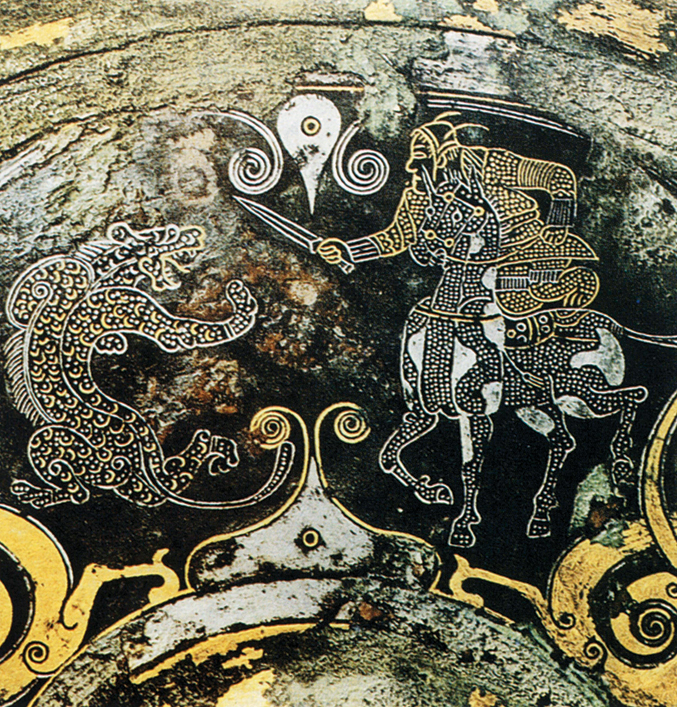New Technologies for War
By 300 B.C.E. states were sending out armies of a few hundred thousand drafted foot soldiers, usually accompanied by horsemen. Adding to their effectiveness was the development of the crossbow around 350 B.C.E. The intricate bronze trigger of the crossbow allowed a foot soldier to shoot farther than could a horseman carrying a light bow. One text of the period reports that a skilled soldier with a powerful crossbow and a sharp sword was the match of a hundred ordinary men. To defend against crossbows, soldiers began wearing armor and helmets. Most of the armor was made of leather strips tied with cords. Helmets were sometimes made of iron. (See “Global Trade: Iron.”)
The introduction of cavalry in this period further reduced the need for a chariot-

Because of these developments, rulers wanted to increase their populations, to have more commoners to serve as foot soldiers and more craftsmen to supply more weapons. To increase agricultural output, they brought new land into cultivation, drained marshes, and dug irrigation channels. Rulers began surveying their land and taxing farmers. They wanted to undermine the power of lords over their subjects in order to get direct access to the peasants’ labor power. Serfdom thus gradually declined. Registering populations led to the extension of family names to commoners at an earlier date than anywhere else in the world.
The development of infantry armies also created the need for a new type of general, and rulers became less willing to let men lead troops merely because of aristocratic birth. In The Art of War (453–
War is the Way of deceit. Thus one who is competent pretends to be incompetent; one who uses [his army] pretends not to use it; one who draws near pretends to be distant; one who is distant pretends to draw near. If [the enemy desires] some advantage, entice him [with it]. If he is in disorder, seize him. If he is substantial, be prepared for him. If he is strong, evade him. If he is enraged, irritate him [further]. If he is humble, make him haughty. If he is rested, make him toil. If he is intimate [with his ranks], separate them. Attack where he does not expect it and go where he has not imagined. This is how military experts are victorious.4